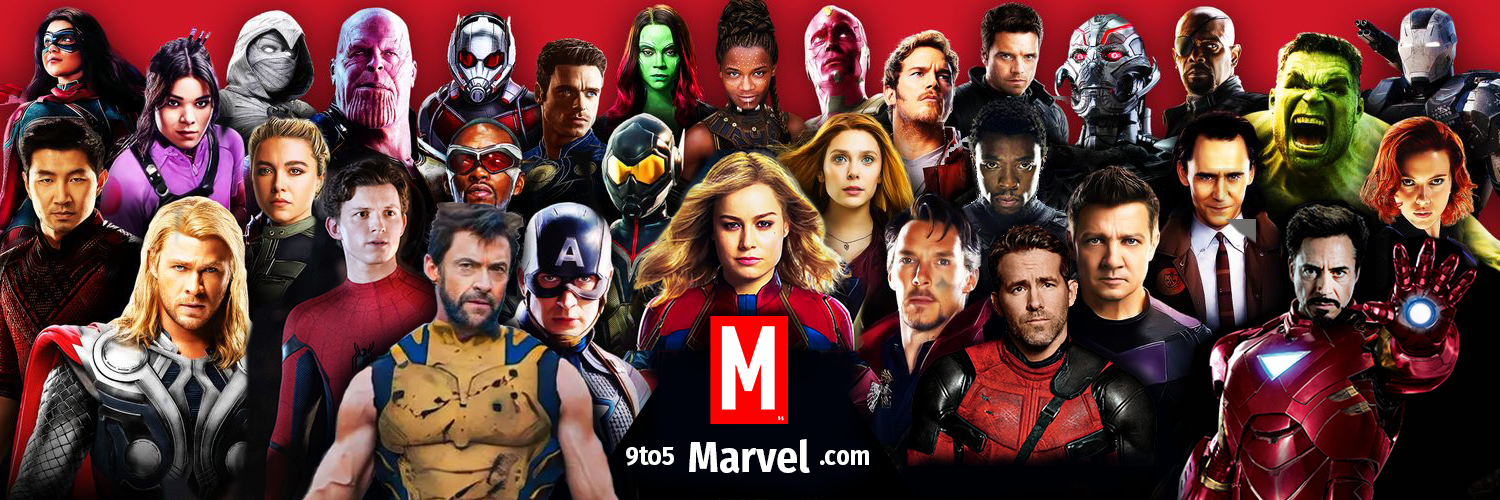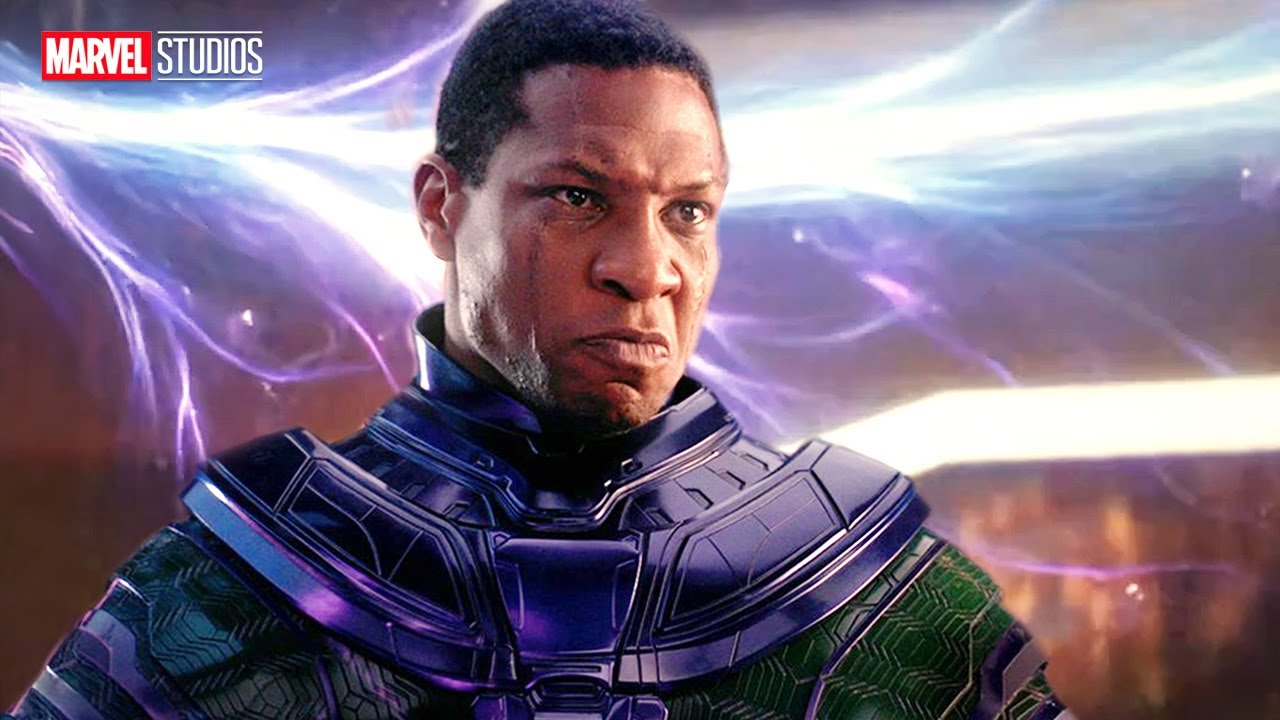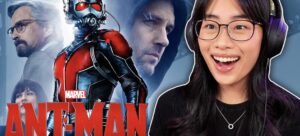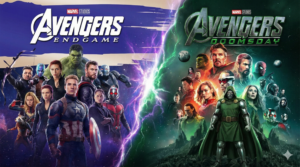The MCU’s next chapter is shaping up to be dramatically different from what was originally planned. Recent revelations from Michael Waldron, the original writer of Avengers Secret Wars and co-writer of Avengers Kang Dynasty, have unveiled a treasure trove of deleted scenes, alternate storylines, and major plot changes that would have defined the franchise’s future. From Young Avengers comedy sequences to the Council of Kangs showdown, here’s everything that changed when Marvel pivoted from Kang Dynasty to Avengers Doomsday.
The Original Vision: Kang Dynasty’s Deleted Scenes
During a recent Reddit Q&A for an unrelated Disney+ show, Waldron pulled back the curtain on the original Avengers Kang Dynasty script. The most surprising revelation? A comedic Young Avengers sequence that would have seen the team defeat a Kang variant in what Waldron described as a “turned comedic scene.”
In this deleted subplot, the Young Avengers—comprising Ms. Marvel, Cassie Lang, Kate Bishop, Riri Williams, Billy, Tommy, and possibly America Chavez—would encounter and defeat a Kang variant, only to discover he was wearing a card that read “be patient with him, it’s his first day as a Kang.” The hollow victory would have deflated the team’s triumph, revealing this was the Lizard Kang from the Ant-Man and the Wasp: Quantumania post-credits scene featuring the Council of Kangs.
This heavily comedic tone represented a stark departure from the more serious direction Marvel ultimately chose. While some fans might have embraced the Young Avengers’ prominent role, the comedy-heavy approach likely wouldn’t have resonated with the broader audience expecting an Infinity War-level threat.
The Council of Kangs: Marvel’s Original Endgame
Waldron’s revelations confirm that Kang Dynasty would have centered on the Council of Kangs as the primary antagonists, specifically featuring three main Kang variants plus Immortus: the Scarlet Centurion, Rama-Tut, and the Kang from Quantumania who was believed dead.
The structure would have mirrored Avengers: Infinity War’s multi-team approach, with Sam Wilson assembling a new Avengers roster alongside the Fantastic Four. The heroes would split into three different teams, each confronting a different Kang variant across different time periods—a narrative structure that would have showcased the time-traveling villain’s multiversal dominance.
Marvel planned to lean heavily into the connection between the Fantastic Four and Kang, particularly exploring the relationship between Reed Richards and the villain. This connection stems from the comics, where Kang’s original identity as Nathaniel Richards ties him to Reed’s father, who is himself a time traveler. The similar aesthetics between the Fantastic Four’s technology and the TVA’s Kang-designed tech in Doctor Strange in the Multiverse of Madness would have been explicitly explained.
The Naruto-Style Twist Ending
Perhaps most intriguingly, Waldron revealed that Kang Dynasty would have ended with a devastating twist reminiscent of Naruto’s Fourth Shinobi War arc. Just as Infinity War concluded with Thanos’s snap, Kang Dynasty would have featured its own downer ending.
In this version, the Avengers teams would fail to completely defeat the Council of Kangs. Then, in a dramatic power move, the Kang from Quantumania—previously thought dead—would have returned to kill the lesser Kang variants, establishing himself as a far more formidable threat. This betrayal would have demonstrated that the heroes had no hope of defeating this ultimate Kang, setting up Secret Wars as the final confrontation.
The Young Avengers: From Central Players to Sidelined
One of the most significant changes in Marvel’s plans involves the Young Avengers. Originally, this team would have already formed and played a major role in Avengers 5. The characters had been seeded across multiple Disney+ shows and films, with Marvel planning to introduce them all before the COVID delays and Hollywood guild strikes forced timeline adjustments.
Leaked concept art from earlier this year showed the Young Avengers standing alongside the main Avengers team, including Star-Lord, Wong, and even Doop from the X-Men, in what appeared to be a nightclub setting. This imagery likely connected to the deleted scenes Waldron discussed.
However, when the Russo Brothers took over Avengers Doomsday, they reportedly eliminated most of the Young Avengers subplot. At best, one or two characters might cameo in the background. Marvel is now waiting until after Secret Wars and the MCU’s soft reboot to properly launch the Young Avengers—though the team has been rebranded as “Champions” for their upcoming TV show.
The rebrand makes strategic sense. Marvel wants to preserve the prestige of the Avengers name rather than diluting it across multiple TV shows. Additionally, by the time the Champions show actually airs, the actors will be in their early 30s—making “Young Avengers” an increasingly inaccurate descriptor. Hailee Steinfeld’s Kate Bishop even joked about this in Ms. Marvel, telling Kamala Khan, “You know I’m not a kid anymore. I’m actually a middle-aged adult.”
From Kang to Doom: The Villain Pivot
The most dramatic shift in Marvel’s plans came with the decision to replace Kang as the primary antagonist with Doctor Doom, played by Robert Downey Jr. in a stunning casting announcement. This change fundamentally altered both Avengers 5 and 6, transforming Kang Dynasty into Avengers Doomsday.
According to Kevin Feige, Marvel wanted to shift away from Kang as the main villain even before Jonathan Majors’s legal troubles. Whether you believe this official narrative or suspect the recasting was damage control, the result is the same: Kang’s central role has been dramatically reduced.
Jeremy Renner recently confirmed on a podcast that Marvel had “big, big plans” for Kang, with Jonathan Majors set to play multiple central characters across both Avengers films. The actor would have been omnipresent throughout both movies, making his replacement even more seismic.
If Marvel had retained Kang even after recasting, Waldron’s revelations suggest he would have been relegated to a background role, likely only appearing in Avengers Doomsday so Doctor Doom could kill him in a shocking twist—similar to Thanos killing Loki at the beginning of Infinity War, but with Doom and Kang.
Kang’s Cancelled Appearances Across the MCU
The ripple effects of removing Kang extend far beyond the Avengers films. The character was originally planned to appear in X-Men ’97 Season 2, which releases next year. After the X-Men get scattered across the timeline at the end of Season 1, Kang would have been instrumental in that storyline.
However, after Marvel fired X-Men ’97 showrunner Beau DeMayo, the Season 2 plot changed significantly. Any Kang storylines have likely been shifted to Apocalypse, who is already the season’s overarching villain operating across past, present, and future. This makes narrative sense, as Apocalypse’s time-traveling activities can cover the same thematic ground originally intended for Kang.
The Soft Reboot and Future Implications
Marvel’s dramatic pivot from Kang to Doom represents more than just a villain swap—it signals a fundamental restructuring of the MCU’s trajectory. The original two-film arc would have built directly on the multiverse saga established in Loki and Quantumania, with Kang variants as the throughline threat.
Now, with Doctor Doom taking center stage, Marvel is positioning Secret Wars as a soft reboot opportunity. Comic book fans know that Secret Wars traditionally involves reality-altering events and the reformation of entire universes. This gives Marvel the flexibility to restructure the MCU, potentially recasting key roles, integrating the X-Men and Fantastic Four more thoroughly, and course-correcting elements that haven’t resonated with audiences.
The implications for characters like Spider-Man, Deadpool, and the X-Men are profound. Secret Wars could serve as the mechanism to finally bring mutants into the MCU properly, explain away continuity issues, and set up a refreshed Marvel universe for Phase 7 and beyond—the so-called “Mutant Saga.”
Will Kang Return?
Despite the massive changes, Kang’s story may not be over. If Marvel chooses to bring the character back, the most likely approach would be a complete recast with a new actor. Given Kang’s nature as a multiverse-spanning character with infinite variants, recasting would be relatively easy to justify within the narrative.
However, any future Kang appearances would likely be supporting roles rather than the franchise-defining presence originally envisioned. The character’s moment as the MCU’s Thanos-level threat has passed.
What’s Next: Doomsday and Secret Wars
With Avengers: Doomsday set for release in 2026 and Avengers: Secret Wars following in 2027, Marvel still has substantial work ahead. The Russo Brothers have brought back Stephen McFeely and Christopher Markus—the writers of Infinity War and Endgame—to completely rewrite both films.
Fans should expect more teasers and footage for Avengers Doomsday by the end of 2025, along with continued reveals about Spider-Man: Brand New Day and other Phase 6 projects. As we approach these releases, more deleted scenes and abandoned subplots from the original Kang Dynasty script will likely leak, providing fascinating glimpses into what might have been.
The shift from Kang Dynasty to Avengers Doomsday represents one of the most dramatic mid-course corrections in MCU history. While we’ll never see the Young Avengers comedy sequences or the Council of Kangs showdown originally planned, the pivot to Doctor Doom offers exciting new possibilities—and the chance for Marvel to recapture the lightning-in-a-bottle success of the Infinity Saga with a villain worthy of the Avengers’ greatest challenge.
As the MCU hurtles toward its soft reboot, one thing is certain: the next two Avengers films will look drastically different from anything fans could have predicted just a few years ago. Whether that’s for better or worse, we’ll discover when Avengers: Doomsday arrives in theaters.




